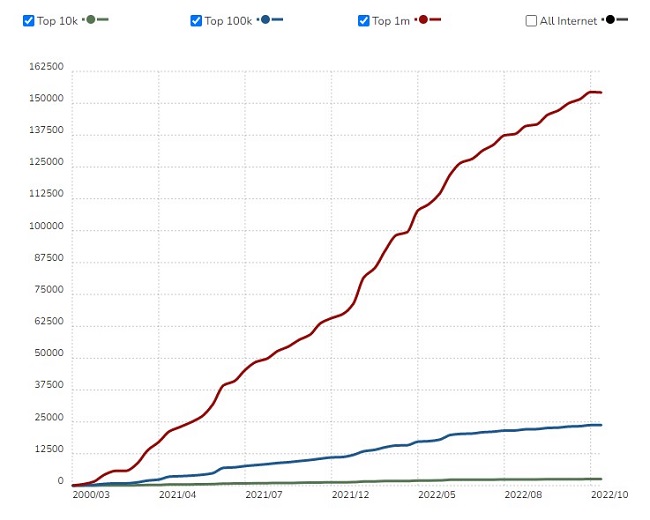By now all digital marketers are aware that Universal Google Analytics (GA3) will no longer process new data in standard properties beginning from 1 July 2023. And, Google has already rolled out the next generation of Analytics, Google Analytics 4. Hopefully, you’re all set up with Google Analytics 4 but if not don’t worry, you are not alone.
In November 2022, 30% of marketers still hadn’t made the switch to Google Analytics 4 from Universal Analytics. So, if you are switching to GA4, there are a few things you must know about Google Analytics 4.
Google Analytics 4 Usage Trends

As illustrated by the graph above, the trend of Google Analytics 4 has increased month over month from 2020 to 2022.
What is Google Analytics 4?
Google Analytics 4 is the upgraded version of Universal Google Analytics (GA3).
This analytics tool helps us to measure the performance of website and apps, and how different marketing channels receive traffic into the website and apps. The focus, however, is on providing more data throughout the entire lifecycle of the customer journey.
Universal Google Analytics was first introduced in 2005 and we have not seen a major update since then.
So, if you are going through the process of upgrading to GA4 and want to know the key things to expect when you switch over, then this blog is what you need.
However, if you are a marketer looking to understand “Why you should switch to GA4” then check out this blog post “Google Analytics 4: A Guide For Marketers In The Cookieless Era” to find out more.
10 Differences Between GA3 and GA4
1. Google Analytics 4 is event-based: All interactions in GA4 are captured as an event. Metrics like page views, user timing, transactions, and other types (from Universal Analytics) are no longer available. Even a pageview is now captured as an event.
2. Data models are different: GA4 is using a more flexible data model where things like “event category”, “event action”, etc. are no longer required. You can set any custom parameters you want to show in GA4.
3. Data from apps and websites in a single property: If your business owns websites and mobile apps, you can now conveniently stream data to the same property which allows you to compare and consolidate user behavior across different platforms. But in GA3 you need to create a separate property for app tracking.
4. Enhanced measurement: GA4 is capable of tracking more than pageviews (without editing the website’s code). Things like outbound link clicks, scrolling, Youtube video, and other interactions can be tracked automatically. But in GA3 it was not possible.
5. View & data stream setup: With GA4, you do not have an option to create views. While in GA3, you can create additional views to track the app and web data.
6. GA3 vs GA4 sessions metrics:
Both GA4 & GA3 sessions are calculated and adjusted differently, In GA3, a session is a group of hits recorded for a user in a given time. While, in GA4, a session is a group of events recorded for a user in a given period. In GA4, there are three types of session-based metrics:
- Sessions: The number of sessions that began on your site based on the session_start event on the app or web.
- Engaged sessions: the number of sessions that have lasted for 10 seconds or longer.
- Engaged sessions per user: the number of engaged sessions per user.
7. Historical data limit: In Universal Analytics, you could set your data to never expire. In GA4, you can select the options for the data that expires either after 2 months or 14 months (if you configure it manually). But in GA3, you can choose the options like 14 months or 26 months, or even to have the data not automatically expire.
8. Enhanced e-commerce tracking: In G GA4, this feature is not working but in GA3, it is available. However, in GA4 you can set up e-commerce events to collect information about the shopping behavior of your users.
9. Bounce rate and engagement rate: GA4 does not measure the bounce rate. It has a new feature “engagement rate”. The engagement metrics are defined as the percentage of engaged sessions. The higher engagement rate shows a good user experience for the website or app.
10. GA3 vs GA4 Conversion Count: In GA3, a conversion counts only once per user session but in GA4, a can be counted multiple times per user session.
For example, if you have defined “file download” as conversion then in GA3 it will count as only one conversion when a user downloads a file in a given session while in GA4, a user can download the file twice in the same session, it means 2 conversions will be counted.
Conclusion
Now that Google Analytics moves from a session-based data model to an event-based model, a lot changes. To help you out we have listed the key differences between the two Google Analytics versions. As GA4 is constantly evolving, some of the items mentioned in the blog posts will change over time.





Tell us your thoughts in the comments